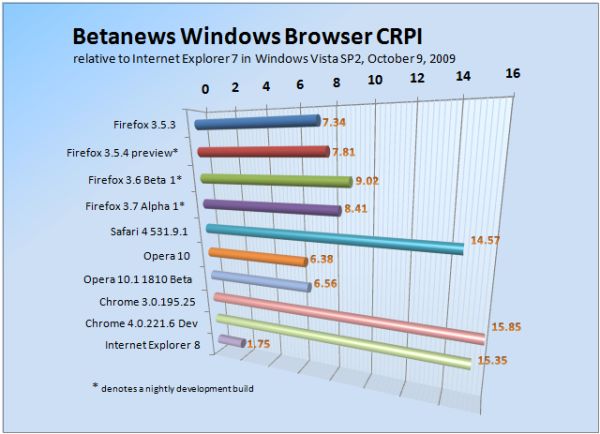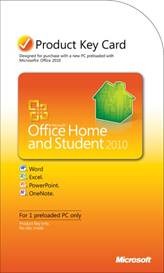
'Amateur' Linux IBM mainframe failure blamed for stranding New Zealand flyers
12:05 pm EDT October 11, 2009 · The president of a design firm that specializes in data center power efficiency, and that was working on a new design last year for the Auckland-based data center that failed Friday morning, told Betanews today that even if changes were being made to that data center, if both the original design and the changeover plan were implemented properly, the data center failure would not have happened.
"What seems strange about this incident is that they are blaming it on a generator failure during testing," stated California Data Center Design Group President Ron Hughes, whose organization was not responsible either for the data center's current design or the changeover. "If this failure did occur during testing, the question I would ask is why didn't the redundant generators assume the load or why didn't they just switch back to utility power."

Expect 22.8% performance boost from next week's Firefox 3.6 beta
The developers at Mozilla have set next week as the tentative rollout window for the first public beta of Firefox 3.6 -- the first edition of the organization's big fixes for 3.5 where it's accepting analysis and advice from the general public. Betanews tests this week on a late version of the 3.6 beta preview, close to the organization's planned code freeze, indicate that users will be visibly pleased by what they see: Generally faster JavaScript execution and much faster page rendering will result in a browser that's almost one-fourth faster than its predecessor -- by our estimate, 22.78% faster on average.
Betanews tested the latest available development and stable builds of all five brands of Web browser, on all three modern Windows platforms -- XP SP3, Vista SP2, and Windows 7 RTM. Once again, we threw the kitchen sink at them: our new and stronger performance benchmark suite, consisting of experiments in all facets of rendering, mathematics, control, and even geometry. Like before, we use a slow browser (Microsoft Internet Explorer 7, the previous version, running in Windows Vista SP2) as our 1.00 baseline, and we produce performance indices representing browsers' relative speed compared to IE7.

FCC demands to know every detail about Google Voice
Yesterday, the Federal Communications Commission launched yet another inquiry into the Google Voice service, this time at the behest of a bi-partisan group of congresspersons who questioned Google's ability to block calls to rural telephone exchanges.
"We understand Google has asserted Google Voice is not a 'traditional' telephone service -- despite its use of 10-digit telephone numbers and its ability to connect calls between telephones through a local exchange carrier," members of the House of Representatives wrote to the FCC on Wednesday. "Instead, Google maintains it ought to be allowed to block calls to rural telephone exchanges -- a position we find ill conceived and unfair to our rural constituents."

Why a Verizon iPhone wouldn't work (for Verizon)
One of the most common remarks you'll see in iPhone-related discussion is the "If iPhone were on Verizon Wireless" comment. Though phrased differently, they're usually the same sentiment...discussing how much better the iPhone experience would be on Verizon, and about how many more people would become satisfied iPhone users.
Most people seem to agree that Verizon Wireless' data network is better.

The roots of all evil: Apple, Google, Intel, and Microsoft
Americans love a winner, and will not tolerate a loser.
- General George S. Patton (as portrayed by George C. Scott)

Facing down irrelevance: What Palm can learn from RAZR
The half-life of any piece of modern electronics, which was once measured in years, is now barely a few months. It's no one's fault, of course, but it's a reality that vendors need to integrate into their own life cycle planning lest they get caught with the product line equivalent of grandma's wardrobe.
Simply put, the half-life of today's uber-hot phones is shrinking. Fast.

FTC official dispels $11,000 anti-blogger fine as misinterpretation
When the US Federal Trade Commission last Monday published its amended Guidelines for commercial publishers' behavior, set to go into effect December 1, many sources ended up passing judgment on the document before having read it in its entirety. One misinterpretation that was passed around the blog-O-square like a hot potato was the notion that the FTC would impose an $11,000 fine for each offense where a blog failed to disclose its connections to the manufacturer of a product for which it posted a review.
One blogger, whose tagline is "an Internet entrepreneur who generates six figures online per year," chocked up the supposed fine as another example of the government's "infinite wisdom." Meanwhile, quite ironically, discussion of the fine on one of the world's more popular blogs managed to become newspaper material by way of the Washington Post.

In-flight Wi-Fi: Everybody's doing it
Aircell has made a commanding name for itself in in-flight Wi-Fi systems. In its first year offering GoGo InFlight Internet service, the company has secured Wi-Fi contracts with Virgin America, American Airlines, US Airways, Delta, AirTran, United, and others.
At the beginning of 2009, United announced that it would begin to offer Aircell's GoGo Wi-Fi on its transcontinental service between New York and California "in the second half of this year," and it has finally been able to deliver.

FCC Chairman: Spectrum deficit could set wireless data back 50 years
"We are fast entering a world where mass-market mobile devices consume thousands of megabytes each month," FCC Chairman Julius Genachowski warned at CTIA Wireless yesterday. "So we must ask: what happens when every mobile user has an iPhone, a Palm Pre, a BlackBerry Tour, or whatever the next device is? What happens when we quadruple the number of subscribers with mobile broadband on their laptops or netbooks?
"The short answer: We will need a lot more spectrum."

Microsoft to replace Works with ad-supported 'Office Starter 2010'
In a bold new experiment for distributing Office that, quite surprisingly, does not involve Office Web Apps, Microsoft announced this afternoon its plans to let OEMs pre-install the full Office 2010 on new PCs, but enable it to run in a limited format until users purchase their licenses. That format, for the first time, will be ad-supported.
When Office 2010 premieres (the official date is still unknown at this point), a Microsoft spokesperson confirmed to Betanews, new Windows 7 PCs will be made available through participating OEMs (no list has been revealed yet) that contain, pre-installed, a product that will be known as Office Starter 2010. It will contain partly functional versions of Word and Excel -- or perhaps more accurately, it will appear to contain partly functional versions, because the complete Office 2010 software will be installed on these systems.

Judge orders Google, publishers to start over on Books settlement
In the wake of a Dept. of Justice Statement of Interest last month questioning whether Google had the right to negotiate a settlement deal on behalf of publishers that aren't direct parties to the deal -- and that may not even exist anymore -- the federal judge overseeing the case, Judge Denny Chin, ordered Google and publishers' groups to draft a completely revised settlement proposal by November 9.
At issue now is that several of the groups on whose behalf Google was claiming to be acting, actually do exist; and a number of them filed objections to the settlement, most recently on September 22, asking why they weren't made direct participants. Last September 2, Judge Chin ruled that groups representing photographers whose scanned works would be made public through Google Books, were too late in making their objections heard.

Now that 7Digital supports US, Songbird can almost replace iTunes
UK music store 7Digital is now open for business in the US, challenging iTunes with $7.77, DRM-free albums.
Online music store 7Digital officially gained support from all major labels in March of 2008, and has since enjoyed substantial growth by offering its platform as an API for developers to integrate into other services such as RIM's BlackBerry music download service and EMI's music discovery portal.

Clever Adobe compilation trick sneaks Flash apps onto iPhone
Up to now, Apple's prohibition against anyone's runtime modules from appearing on its iPhone without authorization has been one of two central reasons that Adobe's Flash video and Flash platform have not made their appearance there -- the other reason being simply that Steve Jobs doesn't like it.
But at its annual MAX developers' conference in Los Angeles this week, Adobe's engineers unveiled a surprise: It's planning a public beta release of Flash Professional CS5 that will go through a new and unique set of hoops to enable developers to write or export apps built for the Flash runtime, to run on the iPhone as native apps. The new Flash Pro will use a mechanism for Flash application developers to deploy their apps on the iPhone anyway, even without the Flash mobile runtime.

AT&T's first Android phone: A Dell?
Dell has smartphones on the way, but it's not talking about them yet.
In fact, the first Android-powered smartphone on AT&T's network could be coming from Dell, according to reports Wednesday afternoon.

Firefox 3.6 public beta slated for 10/14, promises faster startups, loads
Mozilla's stated goal for its next version of Firefox, first and foremost, is a perceivable improvement in the time it takes to do things, not just render pages. We saw a big performance jump in JavaScript execution and page rendering in Firefox 3.5; but for 3.6, the developers want to apply the same level of improvement to responsiveness and process activation.
Although all Mozilla daily builds -- even the "private" alphas -- are publicly downloadable, the public may be formally invited to render its opinions on version 3.6 on Wednesday, October 14. That's the decision made during a Mozilla planning meeting Monday.



